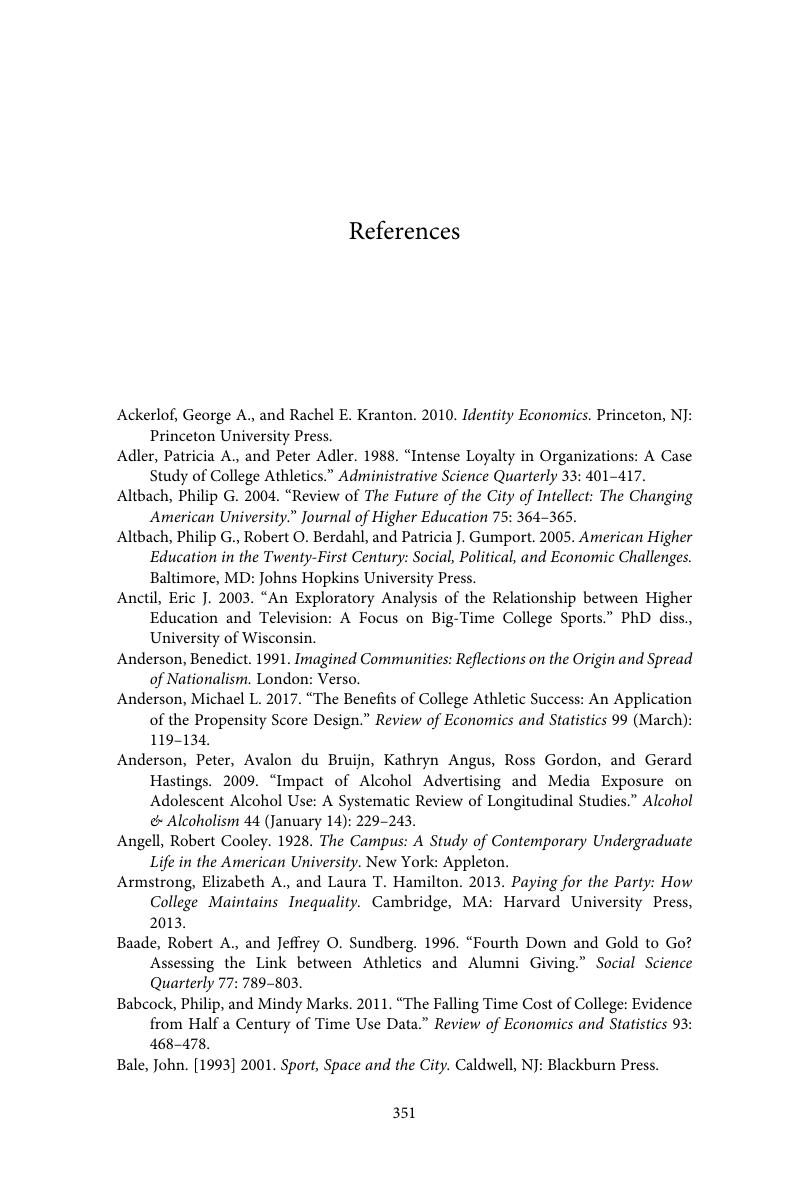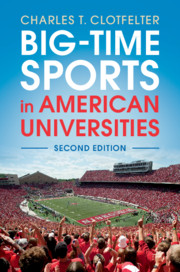Book contents
- Big-Time Sports in American Universities
- Big-Time Sports in American Universities
- Copyright page
- Dedication
- Contents
- Figures
- Tables
- Preface to the Second Edition
- Preface
- Glossary of Abbreviations and Terms
- Part One Commercial Sports as a University Function
- Part Two The Uses of Big-Time College Sports
- Part Three Reckoning
- Appendix
- References
- Index
- References
References
Published online by Cambridge University Press: 05 January 2019
- Big-Time Sports in American Universities
- Big-Time Sports in American Universities
- Copyright page
- Dedication
- Contents
- Figures
- Tables
- Preface to the Second Edition
- Preface
- Glossary of Abbreviations and Terms
- Part One Commercial Sports as a University Function
- Part Two The Uses of Big-Time College Sports
- Part Three Reckoning
- Appendix
- References
- Index
- References
Summary

- Type
- Chapter
- Information
- Big-Time Sports in American Universities , pp. 351 - 362Publisher: Cambridge University PressPrint publication year: 2019

